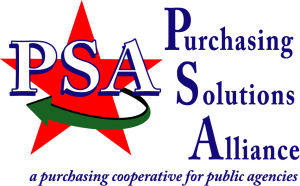Simulation Program Navigates Post-Incarceration Obstacles
“People should always be treated with dignity and respect. While we cannot ignore or forget the past, we also don’t have to let the past define us or others.” Cass County Judge Travis Ransom
In April, I had the opportunity to step outside of my comfort zone. I participated in a “Prison Reentry Simulation” which replicates the challenges and struggles faced by thousands of individuals transitioning from incarceration back into society. The goal of this simulation was for participants to gain an understanding of the significant obstacles faced by men and women attempting to navigate the world post incarceration.
I always encourage participation in things that will broaden perspectives and shape understanding. To walk in the shoes of one who is returning home from incarceration gives invaluable insight for professionals who are tasked with helping those individuals achieve a successful reentry.
About 75 community members participated in the simulation, which was hosted by Communities Unlimited, Inc., and sponsored by the Patterson Troike Foundation, Tru Blu Media, Ready For Life, and the Texarkana Arkansas Recreation Center.
I arrived 30 minutes early because the location was somewhere I’d never been before, and like a good soldier, early is on time and on time is late. After I saw others arriving, I went inside, signed in, and scouted out the location. I mingled with staff and other participants but after about an hour was ready to walk out because we had not begun.
Then, we were provided with a brief overview of our new lives in the simulator. Waiting was part of our new world as formerly incarcerated citizens. Our time was apparently no longer valued. I was handed a packet with my character profile, transportation tickets akin to bus tickets, $30 cash, a card which represented a microwave I owned valued at $100, and another card which represented a guitar I owned valued at $300. My packet also included a narrative of who I was and a life card which provided me with a checklist of items I would be required to accomplish each “week.”
A week of activities consisted of 15 minutes in the real world. I was a felon who had just completed five years in prison after committing internet fraud. I was living with a girlfriend and her two children. I would owe rent and child support in week four. I would need groceries, a job, and identification, and I would need to see my parole officer, pass a drug test, go to substance abuse treatment, and handle life obstacles as they came.
Around the large gymnasium were tables set up with signs on each table representing a different place we might need to go for assistance, places like the DMV for identification, a bank, a church for Alcoholics Anonymous (AA) or Narcotics Anonymous (NA), a food bank, a workforce center to apply for jobs, a clinic to get drug tested, a workplace, a probation office, a court, a plasma center, a pawn shop-quick loan place, and a table labeled “CHANCE” with a myriad of tempting criminal activities that might provide an opportunity to earn some quick money or go back to jail.
Each 15-minute period ended with a short discussion on how participants faired in trying to accomplish all of the tasks while meeting all of their financial obligations and reporting requirements. Each line grew longer and more congested as each participant grew more frustrated with the bureaucracy and monotony of forms to be filled out over and over again just to be turned away for some reason or another.
- Sorry, your paperwork says the drug test was positive.
- Sorry, you don’t have ID; you’ll have to get that updated first.
- We don’t pay in cash; you have to open a bank account before you can cash this check.
- We can only give you a fraction of what your stuff is worth, sorry.
Then there were “wild cards” that were handed out before each 15-minute segment. They included devastating financial, family, or legal troubles. Unexpected pregnancy, evicted from apartment, family troubles, DWI, substance abuse issues, medical issues, car broke down, or just simple expenses like needing a winter coat which could literally determine whether or not you buy groceries this week. Each stop also required you to provide a transportation ticket which cost a dollar a piece.
After spending my only $30 dollars on identification, I applied for a job but had no money to pay for the required drug screening. I pawned my guitar and my microwave which net me $200, a fraction of their value. I passed the drug test (cards flipped over at random indicated whether you had positive or negative drug test). I was able to get one paycheck for $120, but after groceries, a winter coat, transportation costs, and being charged with driving without a license, I was quickly out of money. I tried selling plasma but was told my recent tattoo, piercing, or anemia disqualified me. After running out of options, I eventually took a chance at bank robbery and went back to jail.
Participants quickly got the point. The bureaucratic world of hurry up and wait is frustrating, and that’s sadly the world the formerly incarcerated citizens have found themselves in. Each frustrating roadblock, each form that needed to be filled out in triplicate, and each time we encountered a social worker, governmental employee, or potential employer we were treated like second-class citizens. That made it even more tempting to go take a chance on committing a crime for a quick payoff. Maybe I could just rob one bank and get caught up. Maybe if I just blew off a little steam and got drunk with my old friends, I’d feel better.
Each tempting bad decision in the simulator, just as in real life, would reap exponentially more devastating results in the lives of participants. Overlapping criminal charges in multiple jurisdictions, a revolving door of court-appointed attorneys, and lackadaisical paperwork and processes. Hurry up and wait. Two large holding areas were in the back of the gymnasium. One labeled “JAIL” and the other labeled “HOMELESS SHELTER.” Many participants found their chair had been removed when they attempted to go back to their seat during the discussion period between 15-minute sessions. A pretty accurate portrayal of life after incarceration.
In Arkansas, the recidivism rate is 50.6 percent according to the Winthrop Rockefeller Institute. In Texas, 21.4 percent of Texas Department of Criminal Justice inmates return within three years of release. The Bureau of Justice Statistics claims that approximately 60 percent of formerly incarcerated individuals struggle with unemployment. Bowie and Cass counties have about a 4.5 percent unemployment rate. However, a study released from the Bureau of Justice Statistics in 2021 followed more than 50,000 individuals who were released from federal prison in 2010 and found that at any time during a four-year period, only 40 percent of formerly incarcerated individuals were employed, and those who were able to secure employment struggled with job retention. Experiences like this shape my perspective and inform my decisions. I would encourage anyone in the business of helping people to consider participating in the future. Whether you represent a church, work as a parole officer, are a judge, serve in law enforcement, employ labor, or are just a pencil-pushing bureaucrat, remember this: People should always be treated with dignity and respect. While we cannot ignore or forget the past, we also don’t have to let the past define us or others.
By Cass County Judge Travis Ransom













